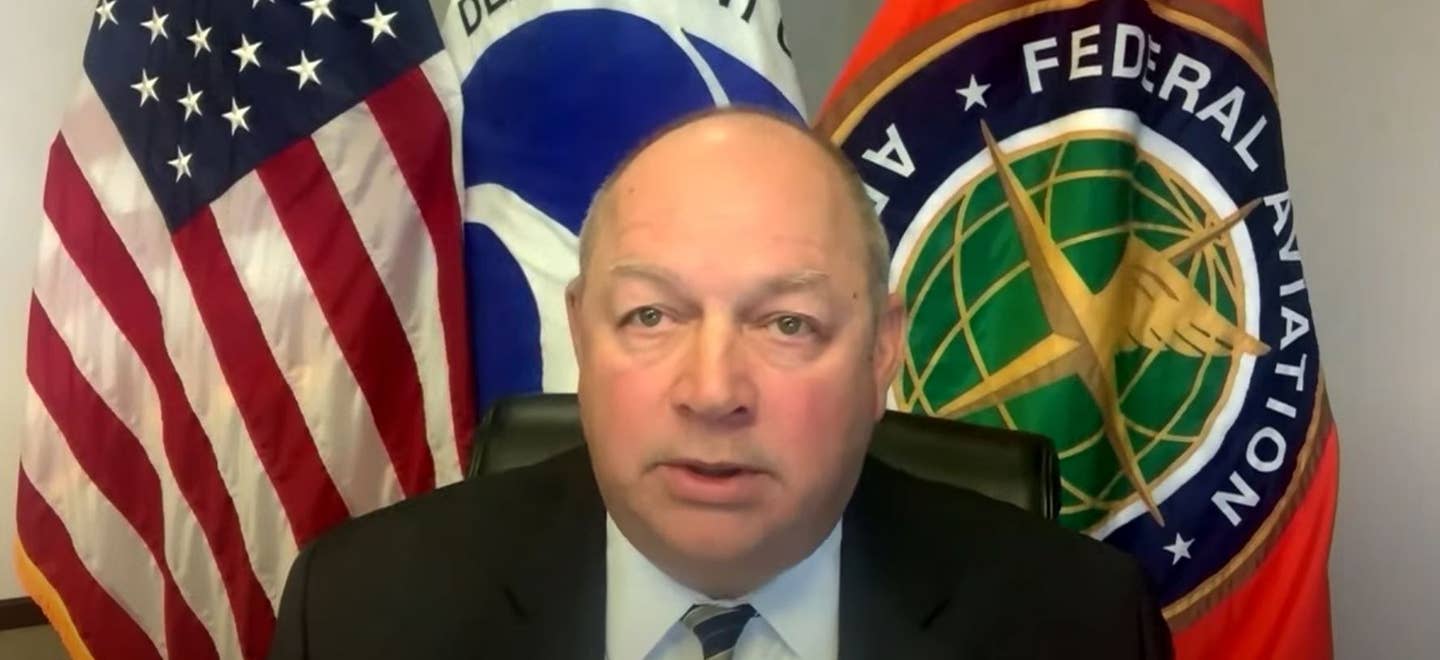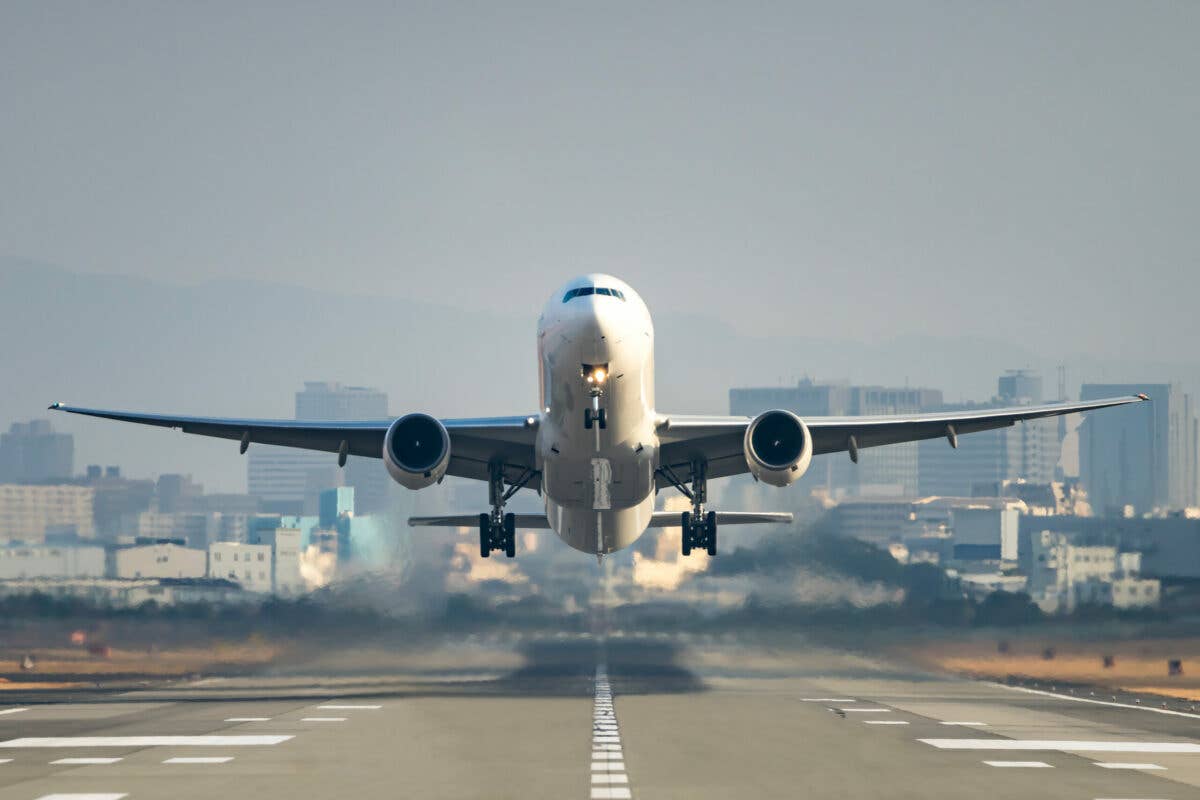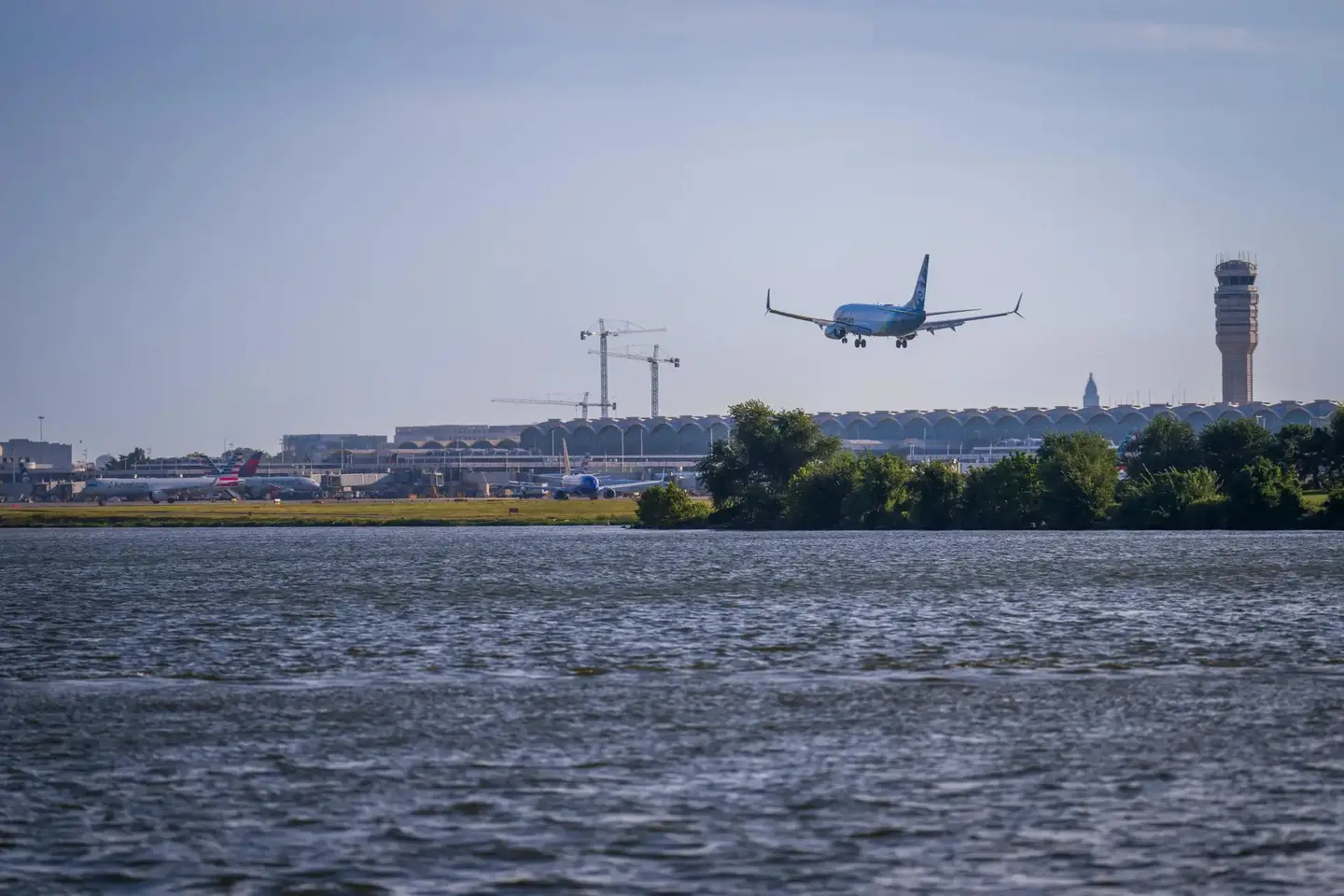Lawmakers, Aviation Community Look for Answers During House Hearing on 5G
Most wanted to know how parties involved got into the controversy, and when it will be fixed.

FAA Administrator Steven Dickson testifies during Thursday’s House Transportation Committee hearing. [YouTube Screenshot]
Why wasn't this issue addressed years ago? And how do we fix it?
These were the two top questions posed at the House Transportation Committee hearing held Thursday about the rollout of 5G and its impact on the aviation industry.
Rep. Garret Graves, R-Louisiana, called the 5G situation as "ridiculous, inexcusable a known challenge for many years with entirely preventable issues," stemming from the fact 5G began development in 2016.
"We're in a better position than we were two or three weeks ago."
Steven Dickson, administrator for the Federal Aviation Administration (FAA)
Steven Dickson, administrator for the Federal Aviation Administration (FAA), shared the frustration, explaining that the FAA attempted to address these issues several years ago, however, "The wireless companies would not release information as to the proposed placement of 5G antennas or their power, so the FAA could not develop a plan to mitigate the interference issues that are having a negative impact on commercial aviation."
Dickson noted that the telecommunications were unaccustomed to working with the FAA, so they did not know what information the FAA needed to build safety models to address potential issues.
But things are improving.
"We're in a better position than we were two or three weeks ago," Dickson said, explaining that after some discussion, the telecommunications companies "agreed not to activate towers unacceptably close to runways, and we are finally getting the information we need for accurate safety assessments."
Joe DePete, president of the Airline Pilots Association, said the organization reached out to the Federal Communications Commission (FCC) as far back as 2018 in effort to ward off safety issues and flight cancellations, but the FCC was not responsive, leaving the airlines to do "workarounds."
Representatives from the FCC, the entity responsible for the administration of the radio frequencies, were not in attendance at Thursday’s hearing.
DePete alleges the telecommunications companies' assertion that 5G is used safely in Europe is somewhat misleading, explaining the towers broadcast below the horizon and at a lower power than in the United States. Furthermore, he said, the safety zones around airports are two and a half times larger.
Six Months to Fix it
Dickson noted that the telecommunications companies and aviation officials will spend the six months trying to develop protocols that both industries can live with. This may include lowering the power of the transmission, adjusting the angle of the transmission towers, and increasing the size of the 5G exclusion zones.
In addition, the FAA will be working with altimeter manufacturers to determine ways to protect the devices from 5G interference.
The Challenges
There is limited bandwidth for radio communications. Telecommunications giants AT&T and T-Mobile spent $80 billion to acquire the C-band spectrum where 5G transmissions occur.
Meredith Baker from the Cellular Telecommunications Industry Association (CTIA) testified that activation of 5G will also help close the "digital divide" and allow more people access to online information more quickly and reliably.
Committee Chairman Peter DeFazio, D-Oregon, was skeptical of the tradeoff, remarking that having a choice between a dropped call or a dropped airplane, he'd prefer the dropped call.
Aviation industry leaders who spoke stressed that 5G transmissions can interfere with the operation of radio altimeters, a critical piece of technology aboard many aircraft especially during low-visibility situations, resulting in a compromise of safety.
"Radio altimeters are integrated into the aircrafts avionics," stated Dennis Roberson, president and CEO of Roberson and Associates, a company that specializes in engineering in the areas of radio frequency spectrum management. "If the radio altimeter says the aircraft is in the air when the aircraft is actually on the ground, the spoilers and reverse thrusters would be blocked.
“On an icy runway that would be an enormous problem."
Frustration Over Cancellations, Delays
Testimony began with Rep. Rick Larsen, D-Washington, who noted that the week 5G rolled out, Alaska Airlines canceled more than 35 flights into Paine Field in Everett, Washington, due in part to concerns over the potential for compromised radio altimeter information during thick fog.
Larsen noted that aircraft land in fog all the time and joked that the 5G issue had "more layers than a Dagwood sandwich."
Airline representatives warned that 5G is resulting in an increased workload for pilots and dispatchers, who have to be aware of potential 5G disruptions. Often this information is released through Notice to Air Missions (NOTAMs).
Faye Black, president and CEO of the Regional Airline Association, expressed concern that pilots may get overloaded trying to keep up with NOTAMs and the Alternative Means of Compliance (AMOCs), which are procedures airlines establish to handle challenges during flight. The AMOCs are living documents and have expiration dates, and keeping up with the information can be difficult.
"There were 1,500 simultaneous NOTAMs issued on one day. That is unprecedented," she said, adding that because the nation's air traffic system operates on a hub and spoke.
"When there is a mass cancellation of flights, the integrity of the system is compromised. One carrier had 65 flights cancelled in one week. The downstream consequences are vast."

Sign-up for newsletters & special offers!
Get the latest FLYING stories & special offers delivered directly to your inbox






